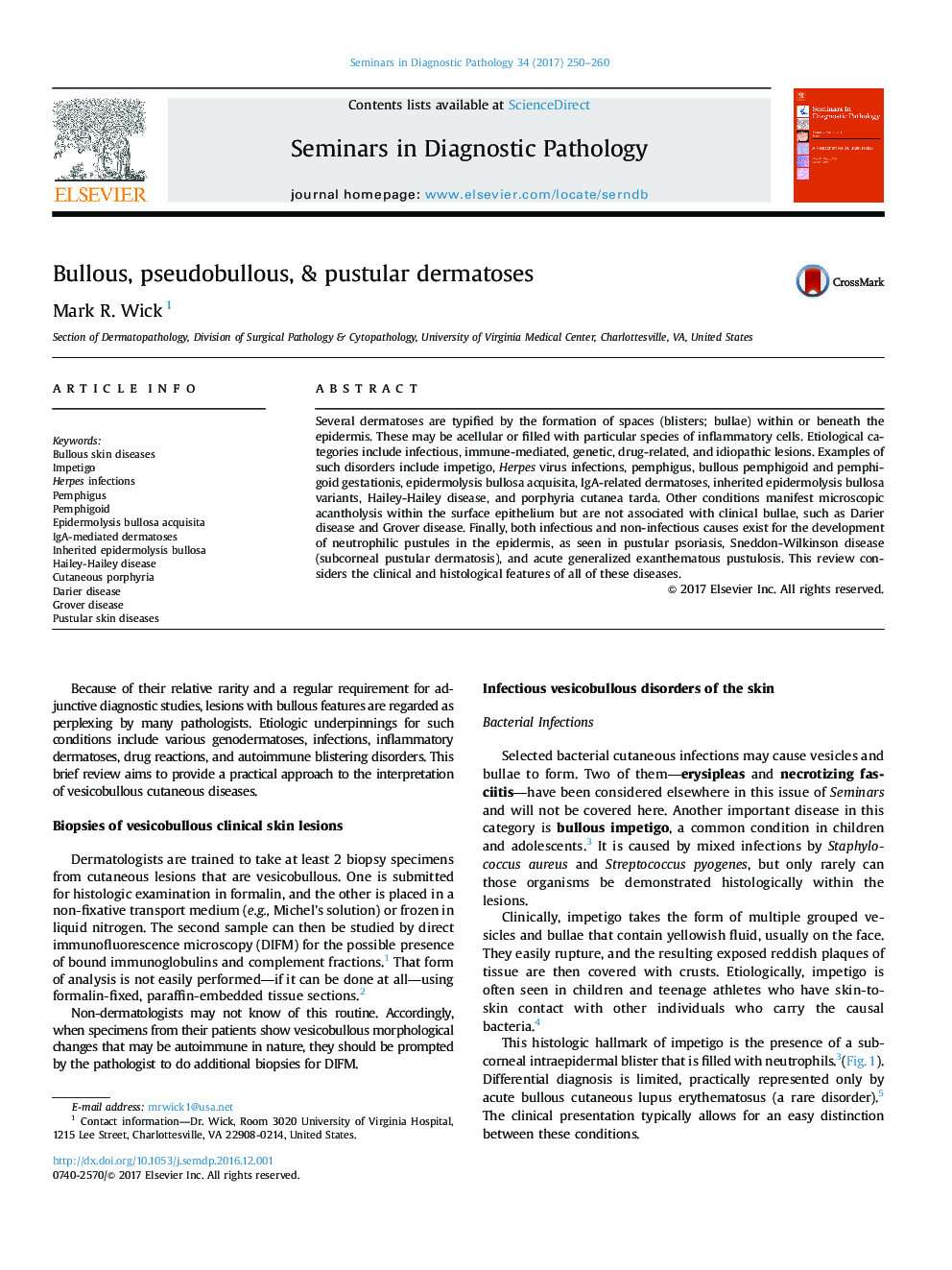| Article ID | Journal | Published Year | Pages | File Type |
|---|---|---|---|---|
| 5716692 | Seminars in Diagnostic Pathology | 2017 | 11 Pages |
Abstract
Several dermatoses are typified by the formation of spaces (blisters; bullae) within or beneath the epidermis. These may be acellular or filled with particular species of inflammatory cells. Etiological categories include infectious, immune-mediated, genetic, drug-related, and idiopathic lesions. Examples of such disorders include impetigo, Herpes virus infections, pemphigus, bullous pemphigoid and pemphigoid gestationis, epidermolysis bullosa acquisita, IgA-related dermatoses, inherited epidermolysis bullosa variants, Hailey-Hailey disease, and porphyria cutanea tarda. Other conditions manifest microscopic acantholysis within the surface epithelium but are not associated with clinical bullae, such as Darier disease and Grover disease. Finally, both infectious and non-infectious causes exist for the development of neutrophilic pustules in the epidermis, as seen in pustular psoriasis, Sneddon-Wilkinson disease (subcorneal pustular dermatosis), and acute generalized exanthematous pustulosis. This review considers the clinical and histological features of all of these diseases.
Keywords
Related Topics
Health Sciences
Medicine and Dentistry
Pathology and Medical Technology
Authors
Mark R. Wick,
